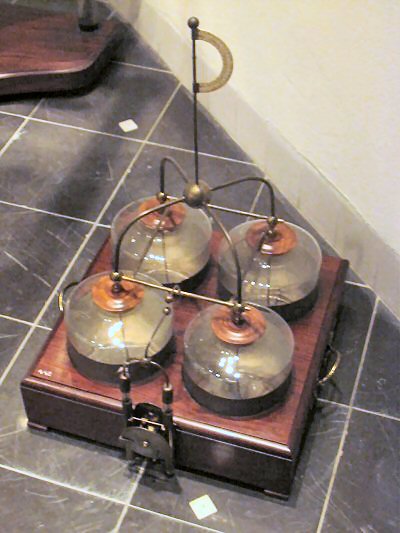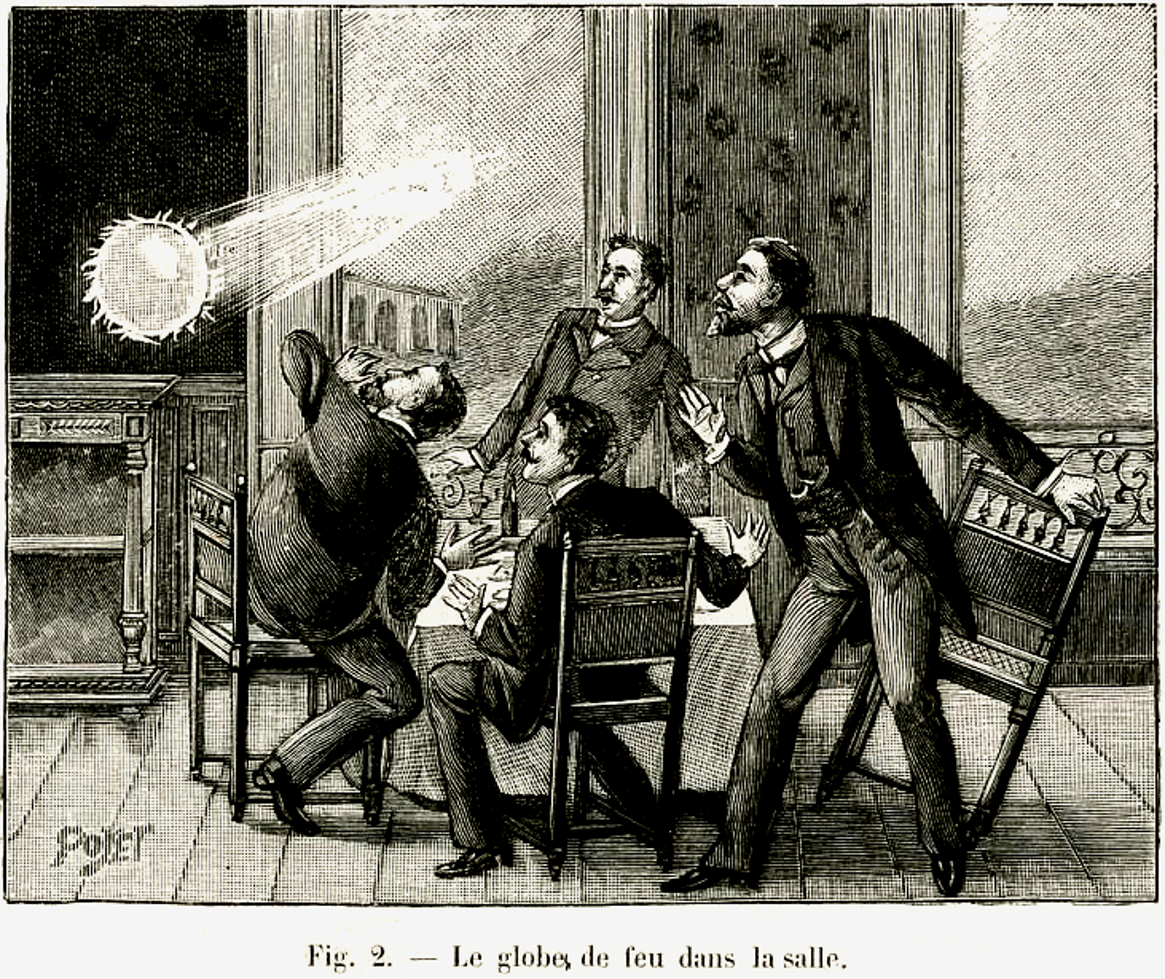|
Kite Experiment
The kite experiment is a scientific experiment in which a kite with a pointed, conductive wire attached to its apex is flown near thunder clouds to collect electricity from the air and conduct it down the wet kite string to the ground. It was proposed and may have been conducted by Benjamin Franklin with the assistance of his son William Franklin. The experiment's purpose was to uncover the unknown facts about the nature of lightning and electricity, and with further experiments on the ground, to demonstrate that lightning and electricity were the result of the same phenomenon. Background Speculations of Jean-Antoine Nollet had led to the issue of the electrical nature of lightning being posed as a prize question at Bordeaux in 1749. In 1750, it was the subject of public discussion in France, with a dissertation of Denis Barberet receiving a prize in Bordeaux; Barberet proposed a cause in line with the triboelectric effect. The same year, Franklin reversed his previous skeptici ... [...More Info...] [...Related Items...] OR: [Wikipedia] [Google] [Baidu] |
Benjamin West, English (born America) - Benjamin Franklin Drawing Electricity From The Sky - Google Art Project
Benjamin ( he, ''Bīnyāmīn''; "Son of (the) right") blue letter bible: https://www.blueletterbible.org/lexicon/h3225/kjv/wlc/0-1/ H3225 - yāmîn - Strong's Hebrew Lexicon (kjv) was the last of the two sons of Jacob and Rachel (Jacob's thirteenth child and twelfth and youngest son) in Jewish, Christian and Islamic tradition. He was also the progenitor of the Israelite Tribe of Benjamin. Unlike Rachel's first son, Joseph, Benjamin was born in Canaan according to biblical narrative. In the Samaritan Pentateuch, Benjamin's name appears as "Binyamēm" (Samaritan Hebrew: , "son of days"). In the Quran, Benjamin is referred to as a righteous young child, who remained with Jacob when the older brothers plotted against Joseph. Later rabbinic traditions name him as one of four ancient Israelites who died without sin, the other three being Chileab, Jesse and Amram. Name The name is first mentioned in letters from King Sîn-kāšid of Uruk (1801–1771 BC), who called himself “King ... [...More Info...] [...Related Items...] OR: [Wikipedia] [Google] [Baidu] |
Marly-la-Ville
Marly-la-Ville () is a commune in the Val-d'Oise department in Île-de-France in northern France, 25 km north of Paris. History Thomas-François Dalibard lived at 15 rue du Colonel Fabien, a classical eighteenth-century mansion. He was a naturalist and a disciple of Georges-Louis Leclerc de Buffon. He translated and published the works of Carl Linnaeus thus introducing Linnaean nomenclature in France. Also a devoted physicist, he tested the experimental ideas of Benjamin Franklin at his house, completing the first capture electrical charge from lightning. Thus, the lightning rod was born at Marly-la-Ville.Cf. En pays de France, op. cit., p. 483-484. Population See also *Communes of the Val-d'Oise department The following is a list of the 184 communes of the Val-d'Oise department of France. The communes cooperate in the following intercommunalities (as of 2020): [...More Info...] [...Related Items...] OR: [Wikipedia] [Google] [Baidu] |
Leyden Jar
A Leyden jar (or Leiden jar, or archaically, sometimes Kleistian jar) is an electrical component that stores a high-voltage electric charge (from an external source) between electrical conductors on the inside and outside of a glass jar. It typically consists of a glass jar with metal foil cemented to the inside and the outside surfaces, and a metal terminal projecting vertically through the jar lid to make contact with the inner foil. It was the original form of capacitor (also called a ''condenser''). Its invention was a discovery made independently by German cleric Ewald Georg von Kleist on 11 October 1745 and by Dutch scientist Pieter van Musschenbroek of Leiden (Leyden), Netherlands in 1745–1746. The Leyden jar was used to conduct many early experiments in electricity, and its discovery was of fundamental importance in the study of electrostatics. It was the first means of accumulating and preserving electric charge in large quantities that could be discharged at the exp ... [...More Info...] [...Related Items...] OR: [Wikipedia] [Google] [Baidu] |
Benjamin Loxley
Benjamin Loxley, also known as Benjamin Lockley (December 20, 1720 – October 10, 1801) was a Philadelphia carpenter-architect, master builder, investor and military leader in the American Colonial Period. He began his career by working as a carpenter-architect and renting out land outside the city. He then worked as a master builder and built various properties in the city. He invested in many schemes and was the largest stockholder of the Carpenters' Company of the City and County of Philadelphia at one point. He was also a philanthropist and participated in several civil activities. Loxley was also a well known Patriot military leader and was engaged in several battles. He rose through the ranks and eventually became a major in command of artillery. He fought in battles under George Washington. He was taken as a prisoner of war when the British captured and overtook Philadelphia and eventually released in a prisoner exchange. He collaborated with Benjamin Franklin on some of ... [...More Info...] [...Related Items...] OR: [Wikipedia] [Google] [Baidu] |
Joseph Priestley
Joseph Priestley (; 24 March 1733 – 6 February 1804) was an English chemist, natural philosopher, separatist theologian, grammarian, multi-subject educator, and liberal political theorist. He published over 150 works, and conducted experiments in electricity and other areas of science. He was a close friend of, and worked in close association with Benjamin Franklin involving electricity experiments. Priestley is credited with his independent discovery of oxygen by the thermal decomposition of mercuric oxide, having isolated it in 1774. During his lifetime, Priestley's considerable scientific reputation rested on his invention of carbonated water, his writings on electricity, and his discovery of several "airs" (gases), the most famous being what Priestley dubbed "dephlogisticated air" (oxygen). Priestley's determination to defend phlogiston theory and to reject what would become the chemical revolution eventually left him isolated within the scientific community. Prie ... [...More Info...] [...Related Items...] OR: [Wikipedia] [Google] [Baidu] |
The Pennsylvania Gazette
''The Pennsylvania Gazette'' was one of the United States' most prominent newspapers from 1728 until 1800. In the several years leading up to the American Revolution the paper served as a voice for colonial opposition to British colonial rule, especially as it related to the Stamp Act, and the Townshend Acts. History The newspaper was first published in 1728 by Samuel Keimer and was the second newspaper to be published in Pennsylvania under the name ''The Universal Instructor in all Arts and Sciences: and Pennsylvania Gazette'', alluding to Keimer's intention to print out a page of Ephraim Chambers' '' Cyclopaedia, or Universal Dictionary of Arts and Sciences'' in each copy. On October 2, 1729, Samuel Keimer, the owner of the ''Gazette'', fell into debt and before fleeing to Barbados sold the newspaper to Benjamin Franklin and his partner Hugh Meredith, who shortened its name, as well as dropping Keimer's grandiose plan to print out the ''Cyclopaedia''. Franklin not only p ... [...More Info...] [...Related Items...] OR: [Wikipedia] [Google] [Baidu] |
Pennsylvania Gazette
''The Pennsylvania Gazette'' was one of the United States' most prominent newspapers from 1728 until 1800. In the several years leading up to the American Revolution the paper served as a voice for colonial opposition to British colonial rule, especially as it related to the Stamp Act, and the Townshend Acts. History The newspaper was first published in 1728 by Samuel Keimer and was the second newspaper to be published in Pennsylvania under the name ''The Universal Instructor in all Arts and Sciences: and Pennsylvania Gazette'', alluding to Keimer's intention to print out a page of Ephraim Chambers' '' Cyclopaedia, or Universal Dictionary of Arts and Sciences'' in each copy. On October 2, 1729, Samuel Keimer, the owner of the ''Gazette'', fell into debt and before fleeing to Barbados sold the newspaper to Benjamin Franklin and his partner Hugh Meredith, who shortened its name, as well as dropping Keimer's grandiose plan to print out the ''Cyclopaedia''. Franklin not only p ... [...More Info...] [...Related Items...] OR: [Wikipedia] [Google] [Baidu] |
Christ Church, Philadelphia
Christ Church is an Episcopal church in the Old City neighborhood of Philadelphia. Founded in 1695 as a parish of the Church of England, it played an integral role in the founding of the Protestant Episcopal Church in the United States. In 1785, its rector, William White, became the first Presiding Bishop of the Episcopal Church. From 1754 to 1810, the church's tower and steeple was the tallest structure in the Thirteen Colonies and, later, the tallest structure in the United States. History Christ Church was founded in 1695 by members of the Church of England, who built a small wooden church on the site by the next year. In 1700, Evan Evans travelled from Wales to become their rector. When the congregation outgrew the original building twenty years after its construction, they decided to erect a new church, the most sumptuous in the colonies. The main body of the church was constructed between 1727 and 1744, and the steeple was added in 1754, making it the tallest build ... [...More Info...] [...Related Items...] OR: [Wikipedia] [Google] [Baidu] |
Cambridge University Press
Cambridge University Press is the university press of the University of Cambridge. Granted letters patent by Henry VIII of England, King Henry VIII in 1534, it is the oldest university press A university press is an academic publishing house specializing in monographs and scholarly journals. Most are nonprofit organizations and an integral component of a large research university. They publish work that has been reviewed by schola ... in the world. It is also the King's Printer. Cambridge University Press is a department of the University of Cambridge and is both an academic and educational publisher. It became part of Cambridge University Press & Assessment, following a merger with Cambridge Assessment in 2021. With a global sales presence, publishing hubs, and offices in more than 40 Country, countries, it publishes over 50,000 titles by authors from over 100 countries. Its publishing includes more than 380 academic journals, monographs, reference works, school and uni ... [...More Info...] [...Related Items...] OR: [Wikipedia] [Google] [Baidu] |
Ball Lightning
Ball lightning is a rare and unexplained phenomenon described as luminescent, spherical objects that vary from pea-sized to several meters in diameter. Though usually associated with thunderstorms, the observed phenomenon is reported to last considerably longer than the split-second flash of a lightning bolt, and is a phenomenon distinct from St. Elmo's fire. Some 19th-century reports describe balls that eventually explode and leave behind an odor of sulfur. Descriptions of ball lightning appear in a variety of accounts over the centuries and have received attention from scientists. An optical spectrum of what appears to have been a ball lightning event was published in January 2014 and included a video at high frame rate. Laboratory experiments have produced effects that are visually similar to reports of ball lightning, but how these relate to the supposed phenomenon remains unclear. Scientists have proposed a number of hypotheses to explain reports of ball lightning over ... [...More Info...] [...Related Items...] OR: [Wikipedia] [Google] [Baidu] |
Saint Petersburg
Saint Petersburg ( rus, links=no, Санкт-Петербург, a=Ru-Sankt Peterburg Leningrad Petrograd Piter.ogg, r=Sankt-Peterburg, p=ˈsankt pʲɪtʲɪrˈburk), formerly known as Petrograd (1914–1924) and later Leningrad (1924–1991), is the second-largest city in Russia. It is situated on the Neva River, at the head of the Gulf of Finland on the Baltic Sea, with a population of roughly 5.4 million residents. Saint Petersburg is the fourth-most populous city in Europe after Istanbul, Moscow and London, the most populous city on the Baltic Sea, and the world's northernmost city of more than 1 million residents. As Russia's Imperial capital, and a historically strategic port, it is governed as a federal city. The city was founded by Tsar Peter the Great on 27 May 1703 on the site of a captured Swedish fortress, and was named after apostle Saint Peter. In Russia, Saint Petersburg is historically and culturally associated with t ... [...More Info...] [...Related Items...] OR: [Wikipedia] [Google] [Baidu] |









